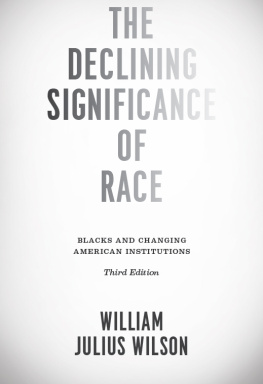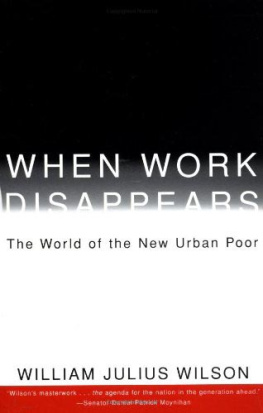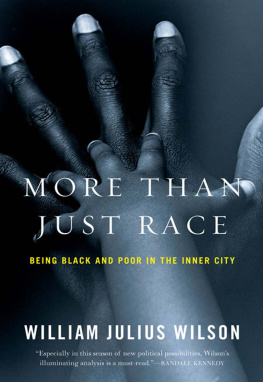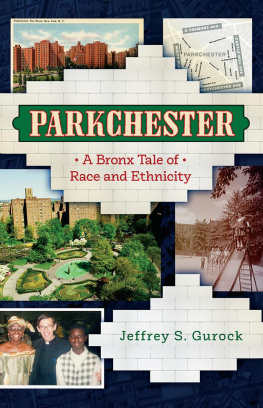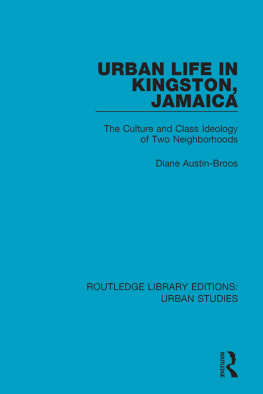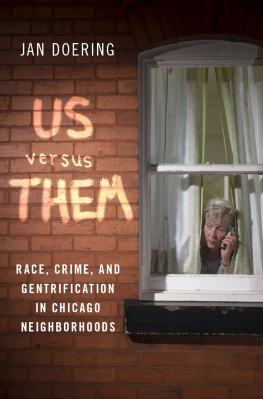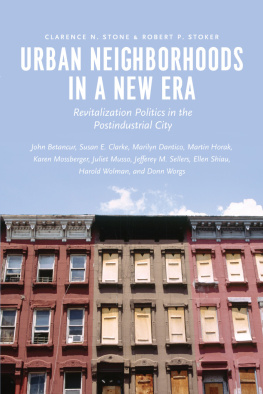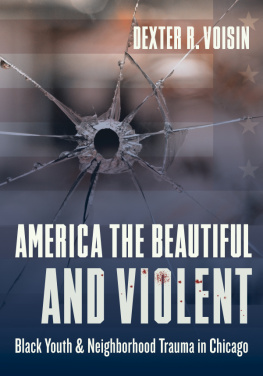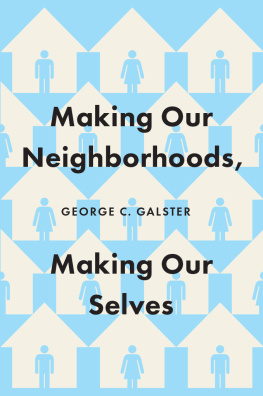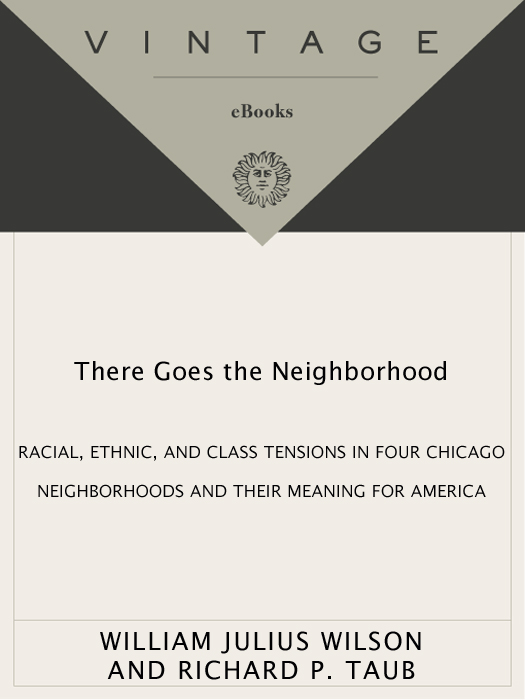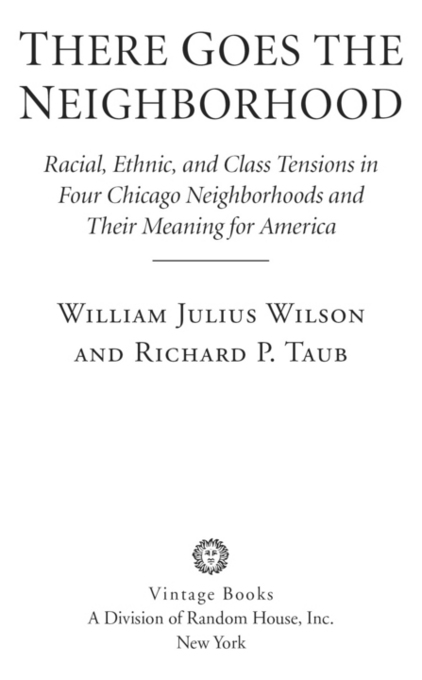Praise for
William Julius Wilson and Richard P. Taubs
T HERE G OES THE N EIGHBORHOOD
Both a compelling work and a disturbing one. [The] assessment of a lack of common ground among different groups in the city seems spot-on.
Time Out Chicago
A powerful sociological study of how the steady influx of Latinos are changing urban neighborhood dynamics and the black-white divide. A major piece of scholarship. It should be read by all those concerned with immigration and Americas urban, multiethnic future.
Lawrence D. Bobo,
Martin Luther King, Jr. Centennial Professor,
Stanford University
An intriguing and insightful study on integration in America. [Wilson and Taubs] findings provide key insights into the problems of racial and ethnic integration.
The Decatur Daily
Writing in the tradition of the Chicago School, two leading students of the city show how ethnic and racial change is not an inevitable linear process. [The book shows how] white, black, and Latino working-class neighborhoods are shaped primarily by the character of local social organization and the larger context of public policy. Absorbing and thought-provoking.
Ira Katznelson,
Ruggles Professor of Political Science and History, Columbia University, and the author of When Affirmative Action Was White: An Untold History of Racial Inequality in Twentieth-Century America
The conclusions remain timely.
Publishers Weekly
An important and disturbing ethnographic report on Chicagos ethnic neighborhoods that powerfully speaks to the racial divide in this country. Wilson and Taub and their innovative researchers have put their finger on the deep-seated racial attitudes that continue to divide urban America, illuminating the challenges we still face half a century after the start of the civil rights movement. This work makes important contributions to our understanding of the issues and possible solutions to the elusive goal of racial peace, comity, and mutual respect. It should be widely read.
Elijah Anderson,
author of Code of the Street
William Julius Wilson
and Richard P. Taub
T HERE G OES THE N EIGHBORHOOD
William Julius Wilson is the Lewis P. and Linda L. Geyser University Professor at Harvard University. He is also the author of Power, Racism, and Privilege; The Declining Significance of Race; The Truly Disadvantaged; and The Bridge over the Racial Divide. He lives in Cambridge, Massachusetts.
Richard P. Taub is the Paul Klapper Professor in the Social Sciences and Professor in the Departments of Comparative Human Development and Sociology at the University of Chicago. His previous books include Community Capitalism and Paths of Neighborhood Change.
ALSO BY WILLIAM JULIUS WILSON
The Bridge over the Racial Divide
When Work Disappears
America Becoming (co-editor)
Poverty, Inequality, and the Future of Social Policy (co-editor)
Sociology and the Public Agenda (co-editor)
The Ghetto Underclass (co-editor)
Through Different Eyes (co-editor)
The Truly Disadvantaged
The Declining Significance of Race
Power, Racism, and Privilege
ALSO BY RICHARD P. TAUB
Doing Development in Arkansas
Community Capitalism
Entrepreneurship in India
Paths of Neighborhood Change (co-author)
Bureaucrats Under Stress
American Society in Tocquevilles Time and Today (editor)
FIRST VINTAGE BOOKS EDITION, OCTOBER 2007
Copyright 2006 by William Julius Wilson
All rights reserved. Published in the United States by Vintage Books, a division of Random House, Inc., New York, and in Canada by Random House of Canada Limited, Toronto. Originally published in hardcover in the United States by Alfred A. Knopf, a division of Random House, Inc., New York, in 2006.
Vintage and colophon are registered trademarks of Random House, Inc.
The Library of Congress has cataloged the Knopf edition as follows:
Wilson, William J., [date]
There goes the neighborhood : racial, ethnic, and class tensions in four Chicago neighborhoods
and their meaning for America / by William Julius Wilson and Richard P. Taub1st ed.
p. cm.
1. Ethnic conflictIllinoisChicago. 2. Chicago (Ill.)Race relations. 3. Social conflict
IllinoisChicago. 4. NeighborhoodsIllinoisChicagoCase studies.
I. Taub, Richard P. II. Title.
HN80.C5W55 2006
305.800977311dc22 2006041027
eISBN: 978-0-307-79470-3
www.vintagebooks.com
v3.1
CONTENTS
ACKNOWLEDGMENTS
In the preparation of this book, we are indebted to a number of individuals and organizations. We are grateful to our editor at Knopf, Victoria Wilson, for her helpful comments on various drafts, including those that improved the flow of the manuscript. We would like to thank James Quane, who provided helpful suggestions on a previous draft. We owe a great deal to Michael Francis Maltese for his assistance in organizing the field notes and for his editorial work on an earlier draft. We are also deeply indebted to Sandra Hackman, who provided helpful editorial suggestions concerning the revision and reorganization of the final draft. We are appreciative to Susan Allen for her assistance in making the book more accessible to a general audience. We thank Brian D. Goldstein for his careful library research, Edward Walker for his careful proofreading and editing of the final draft, and Pamela Joshi for preparing the figures and tables presented in this book.
We would also like to thank the Ford Foundation, the John D. and Catherine T. MacArthur Foundation, and the Rockefeller Foundation for their support of the Center for the Study of Urban Inequality that William Julius Wilson directed at the University of Chicago during the time the collaborators, as field ethnographers, collected the data for this study. These collaborators include Erin Augis, Patrick J. Carr, Chenoa Flippen, Jennifer L. Johnson, Maria J. Kefalas, Reuben A. Buford May, Mary Pattillo, Jennifer Pashup, and Joylon Wurr. Finally, we would like to thank the Ford Foundation for their support of the Joblessness and Urban Poverty Research Program that Wilson directs at Harvard University. This support helped in the analysis and writing phase of the project.
CHAPTER ONE
Race and Neighborhood
Social Organization
T his book is an investigation into ethnic, racial, and class dynamics in four neighborhoods in Chicago, a city that has experienced a steep drop in its white population and a sharp rise in Latino residents. Chicagos Latino population grew by nearly 38 percent between 1990 and 2000, while its white population declined by almost 15 percent (see African Americans remained Chicagos largest single group at 36 percent, but their share of the population had also dropped slightlyby 1.9 percentafter rising steadily through most of the twentieth century.
To fully capture this ethnic diversity, we felt that the most representative neighborhoods would be those that were neither poor nor affluent. We chose neighborhoods that consisted mainly of the working and lower middle classesneighborhoods, in short, that best represented ordinary Beltway was chosen as the white neighborhood, Dover as the white neighborhood in transition, Archer Park as the Latino neighborhood, and Groveland as the African American neighborhood.


